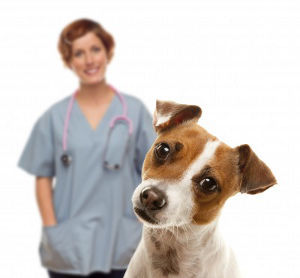
How can we as pet owners make our dogs feel comfortable and safe so they learn to cooperate at veterinary visits instead of feeling threatened? First we need to understand why our dogs behave defensively during veterinary visits.
So why are they difficult?
Dogs are difficult due to the most common behavior problem we see as trainers or behavior therapist, fear. Fear is the number one reason people seek out help for their dogs. The difficult dogs are that way because they are scared, they don’t know the person and now she/he wants to touch him with strange looking things. Some dogs are problematic from having had a previous bad experience. Some are difficult from having their behavior reinforced. Some are difficult for other reasons.
Some dogs fear can set in as early as entering the car. Especially if the only time they get in the car is to go to the vet clinic. Some dogs fear; will begin in the parking lot. And some it’s as soon as they enter the clinic. The scent of other animals, seeing other animals, the hospital’s scent, the uniforms, even people can all be frightening to your dog.
Which will result in unmanageable or defensive behavior? Let’s not forget the other end of the leash – feeling nervous or worried and sending those messages to the dog by being tense, holding breath, fidgeting, along with changes in facial expressions and body language.
Dogs are experts at reading body language they are experts at reading the smallest nuance. That’s how they communicate with each other. So we are pretty easy for dogs to read. Dogs easily can become aroused in this context, and arousal heads toward aggression. Arousal and aggression are very, very close.
An animal’ fear response is still a vital characteristic. A dog’s fear response helps the dog by keeping him safe from danger. The freeze, flight or fight response. If we don’t actively and specifically address fear then with each visit our dog will get worse emotionally, physiologically and behaviorally. Of course you must be able to recognize subtle fear signals before the overt signals in order to help your dog. This is why understanding your dog’s language is a great advantage and a skill dog owners should learn.



